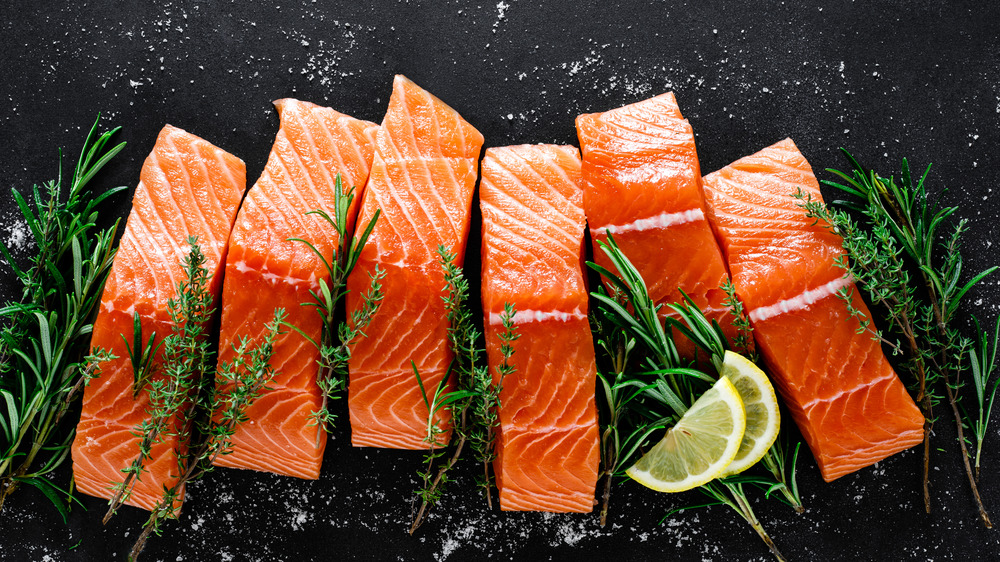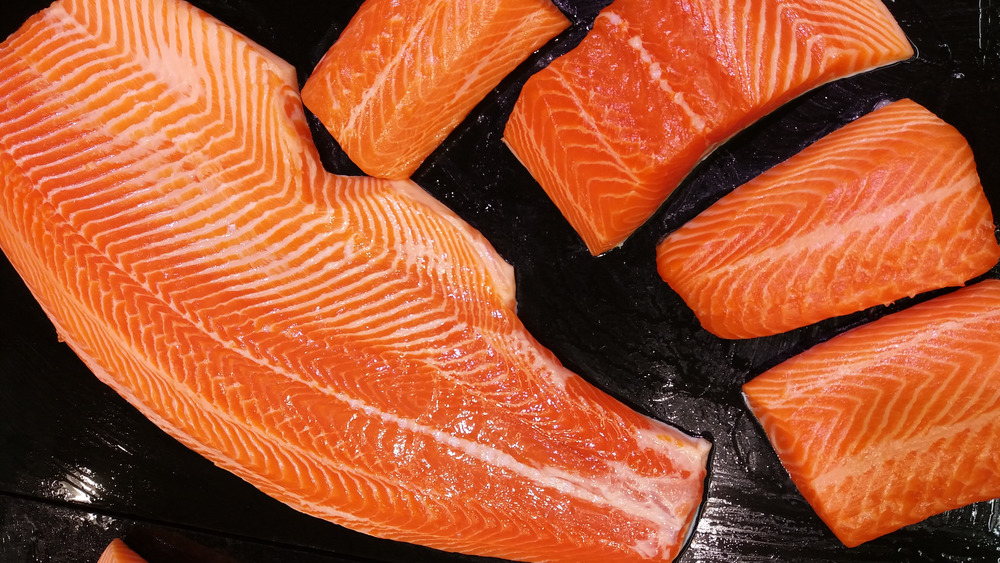How To Pick The Best Salmon At The Grocery Store
What could be better than a nicely grilled filet of salmon? If you said Cheetos, we're with you, but if you are trying to eat healthy, this pinkish-orange fish is probably the better choice. However, if you are among those of us who feel a bit challenged when it comes to buying this piece of fish, don't feel too badly. Buying salmon can be almost as difficult as cooking it right. Simply put, it is not an easy task to pick out the perfect filet of this oh so healthy fish. It can be especially riddled with obstacles if you don't know what you are looking for, not to mention all of the vocabulary or salmonary, as we like to call it, that you might run into when you are at the grocery store trying to pick the right pieces of this omega-3 fatty acid rich fish.
According to All Recipes, when you are buying salmon from the grocery store and selecting your meaty slices, there are a few different factors to consider. These factors include the variety of salmon, whether it is fresh or frozen, how the fish was raised or caught, and what the salmon looks like in color and texture. But once you get these basics down, buying salmon should be a breeze. So, here we go.
Things to consider when buying salmon
All Recipes notes that you first want to look at the size, color and oil content when choosing your salmon. Atlantic salmon falls right in the middle when it comes to these characteristics and won't break the bank. But where things get tricky is when you start looking at where the salmon originated. Do you want fish caught in the wild or from a fish farm?
Per Cooking Light, salmon comes from either the Pacific or Atlantic. If you choose salmon from the Pacific it is most likely — but not always — wild salmon, and Atlantic salmon is always going to be from a farm due to its endangered species status. Salmon from farms tends to be fattier than the wild variety. You may also encounter the term "troll-caught" which means it was caught with a hook and line. This salmon tends to be more expensive than salmon coming from other sources. Cooking Light also notes that the term "fresh" can be subjective and defines "flash-frozen" as fish caught and frozen immediately. Between the two, they recommend flash-frozen. And last, but not least, All Recipes suggests you want salmon that is brightly colored. If a piece of salmon appears dry, stay clear. It should be dewy in appearance and the thicker the better.

